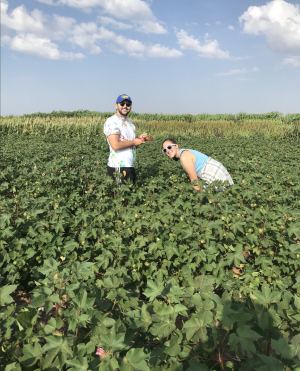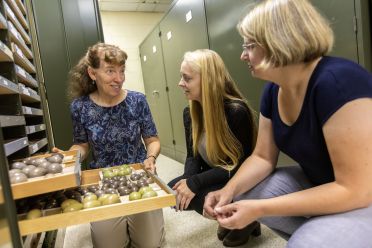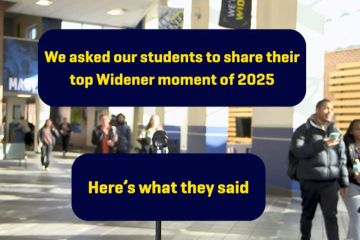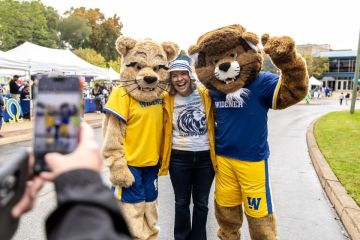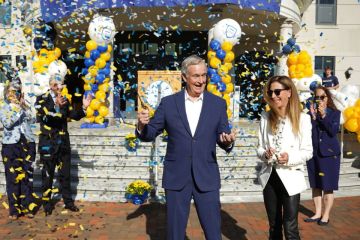Creating a National Model for Research

Tucked above the public exhibits in the Delaware Museum of Natural History are cabinets and drawers filled with specimens – 113,000 birds, 6,000 mammals and 2 million mollusk shells – all neatly tagged and preserved.
Naturally, when Widener Associate Professor Janice Krumm wanted her biology students to conduct research as part of a class, she partnered with the museum and its curators. But, the curators didn’t just give the students access to the locally-housed specimens, they connected them to national databases from other world-renowned collections.
For Evan Perkowski ‘18, who was in that first natural history collections research course in spring of 2018 at Widener, the experience cemented his passion for research – both locally and globally.
“We were able to scale properties of local ecosystems we learned in early biology lab courses to global scale,” said Perkowski, who is currently a biology doctoral student at Texas Tech University. “This class opened me to a global mindset in my research.”
Undergraduate students at colleges and universities all around the country will soon benefit from biology and environmental science courses modeled after the one Perkowski enrolled in at Widener.
That’s because Krumm, in collaboration with Delaware Museum of Natural History curators Jean Woods and Elizabeth Shea, secured a one-year grant for approximately $75,000 from the National Science Foundation. The grant funds the creation of the Biological Collections in Ecology and Evolution Network, a national network of educators, natural history curators, and data experts who can support research courses that connect students with digitized natural history collections.
“We thought ‘wouldn’t it be wonderful if more students had this experience,'" Krumm said. "Embedding research into courses is especially important for low-income or first-generation students, some of whom have difficulty doing an independent study research project for various reasons, including work and family commitments. This gives them the opportunity to conduct research as part of their normal course load.”
Researchers have long used natural history specimens, dating back at least 250 years, to investigate a variety of questions about evolution, ecology, conservation, public health and more. Since the 1980s, museums have begun digitizing these collections.
Woods said she is excited to connect potentially thousands of students to the Delaware Museum of Natural History’s collections, as well as other digital collections.
There are data from hundreds of millions of specimens on the internet to download. Many people who teach undergraduates don’t have experience with this data and natural history collections. We can bring this to their attention and bring more research opportunities to students. – Jean Woods
For Perkowski, those opportunities redirected his career path.
He initially was studying biology as part of Widener’s 4+3 doctoral physical therapy program, but found a passion for research in Krumm’s laboratory in Kirkbride Hall.
“After about a year of research, I decided that instead of pursuing physical therapy, I wanted to pursue a position in academia, mimicking what Janice is doing by working at a small undergraduate research school,” Perkowski said. “If I had gone to any other school, I may not have realized my interest in research.”
Research became a thread through his time at Widener. He started slowly by learning the lab equipment and analyzing microbes in the tissue of plants under Krumm’s direction. Then, he developed his own thesis project and presented his research findings at campus symposiums and a national conference.
Finally, as part of the natural history collection course, he collaborated with his classmate to use digital collections dating back more than a century to analyze whether there was a correlation between the number of fresh water mollusks and fish in a particular body of water in Tennessee – without ever visiting the state.
Using these experiences, he is now earning his doctoral degree at Texas Tech University, studying the impacts of global change on soil microbial communities and how interactions between climate and microbial community’s impact plant physiology. He still turns to Krumm for guidance and collaboration.
“This is the kind of impactful mentorship that matters,” he said. “That was really appealing to me, and I hope to see even more undergraduate students get those same opportunities.”

